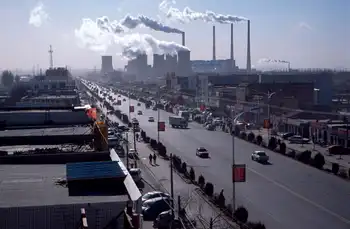Mojave mirrors to provide solar power
By International Herald Tribune
Electrical Testing & Commissioning of Power Systems
Our customized live online or in‑person group training can be delivered to your staff at your location.

- Live Online
- 12 hours Instructor-led
- Group Training Available
The purchase, one of the largest ever of solar power, will help the utility meet California's aggressive mandate that utilities have enough renewable sources online or under contract by 2010 to supply one-fifth of the electricity they sell. The new solar plant is expected to begin producing energy in 2011 or 2012.
The contract, along with similar ones recently signed by Southern California Edison, represents the resurrection of thermal solar arrays, a technology first deployed in the 1980s that foundered in the 1990s because of a collapse in natural gas prices.
But with the price picture shifting and state mandates for renewable energy spreading, an Israeli company, Solel Solar Systems of Beit Shemesh, is betting that this technology will pay off. The approach may lack the appeal of the more familiar rooftop photovoltaic cells, but it costs only around half as much for each unit of energy produced.
PG&E executives said Tuesday that during peak summer hours, power from the 9 square miles, or 23.4 square kilometers, of mirrors in the Mojave Solar Park Project would provide electricity to hundreds of thousands of homes.
"We view concentrated solar as one of the most promising technologies for us," Fong Wan, vice president for energy procurement, said in an interview.
While PG&E executives and the president of Solel, Avi Brenmiller, would not specify how much the utility will pay, people close to both companies put it at slightly more than 10 cents a kilowatt-hour - roughly the retail price for an average kilowatt-hour for American residential customers.
Electricity will be produced using 6-foot, or 1.8-meter, trough-shaped mirrors that focus rays of the desert sun on a pipe less than 3 inches, or 7 centimeters in diameter, heating a fluid inside to 750 degrees Fahrenheit (399 Celsius); the fluid will make steam to drive a turbine. Small motors will tilt the mirrors to keep them facing the sun.
The solar facility, to be built between the Nevada state line and Barstow, California, will consist of four modules of 140 megawatts each, Brenmiller said. "It's going to be similar to existing plants in style," he said, but added, "It will be a little larger than the largest one ever built."
A Spanish company, Acciona Energy, recently opened a similar but smaller facility near Boulder City, Nevada, a 64-megawatt plant called Nevada Solar One.
According to Wan, about 12 percent of Pacific Gas & Electric's electricity comes from renewable sources, divided somewhat evenly among wind, biomass, small hydropower and geothermal. (California does not count traditional large hydroelectric dams toward the quota.)
The contract with Solel would add nearly two percentage points to the company's renewable energy total.
By contrast, Southern California Edison's renewable portfolio now accounts for about 17 percent of its power.
Both Southern California Edison and San Diego Gas & Electric have signed contracts with a different solar thermal company, Stirling Energy Systems of Phoenix, Arizona, for many hundreds of megawatts of power.
Wan said that PG&E was negotiating other purchases from solar thermal developers. Ideally, he said, solar thermal energy would eventually account for up to 5 percent of the utility's energy supply. The company is on track to meet the 20 percent quota, he said, even if some suppliers do not deliver as promised.











